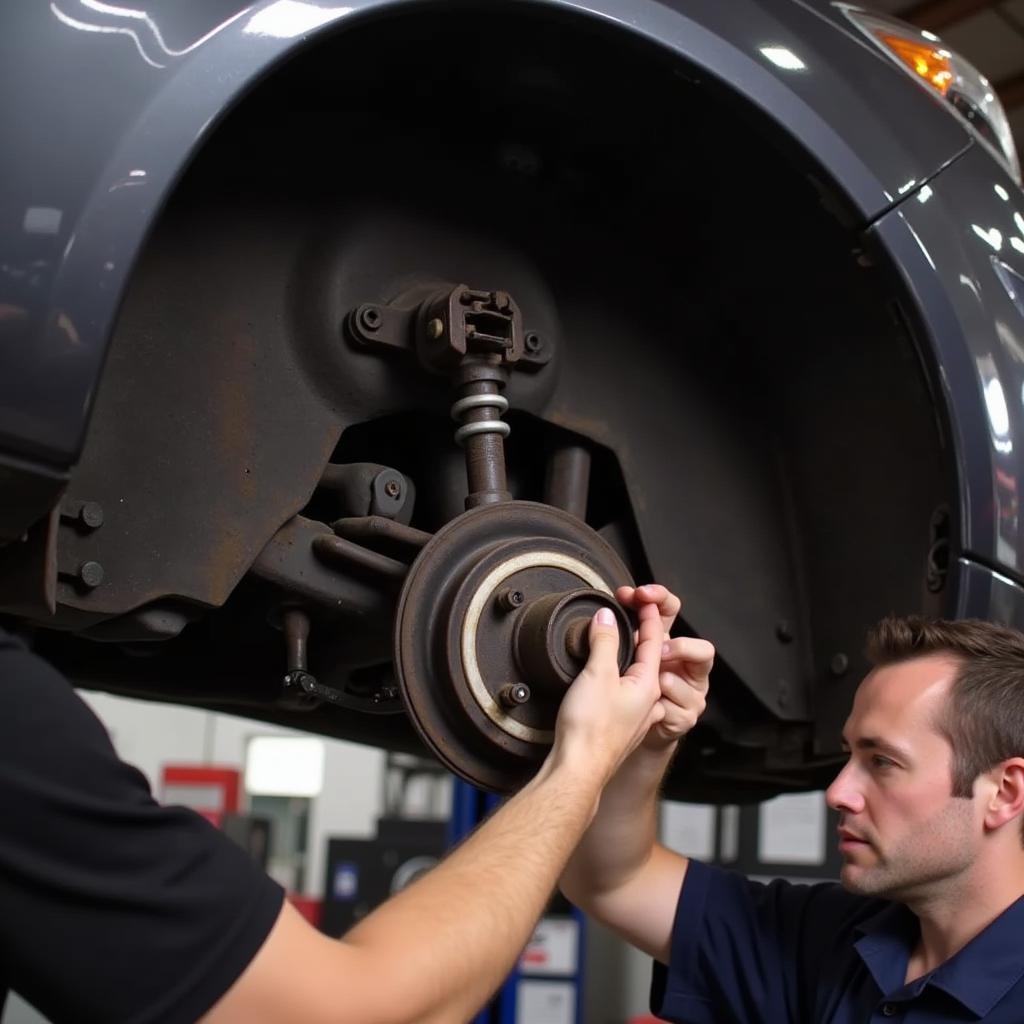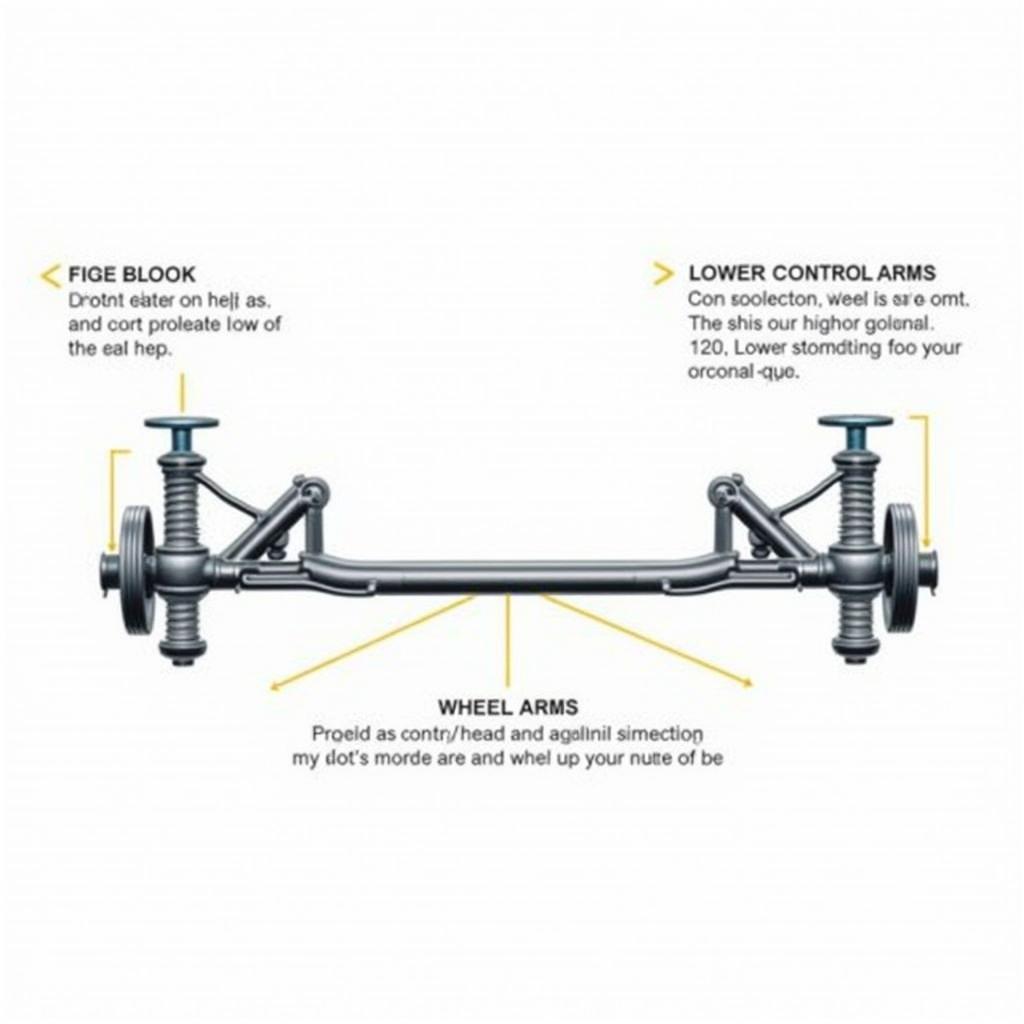Control arms, also known as suspension arms, are crucial components of a vehicle’s suspension system, connecting the wheels to the chassis. They play a vital role in controlling the movement of your car’s wheels, ensuring a smooth and comfortable ride, and maintaining safe handling. Understanding what control arms are, their functions, and potential issues can help you better maintain your vehicle and identify potential problems early on.
What do Control Arms do?
Control arms are fundamental to a car’s suspension system. They act as the primary link between the wheels and the vehicle’s frame, allowing the wheels to move up and down and side to side.
Here’s a breakdown of their key functions:
- Wheel Alignment: Control arms help ensure that the wheels are properly aligned. This alignment influences factors like tire wear, steering responsiveness, and overall vehicle handling.
- Suspension Movement: Control arms provide a controlled range of motion for the wheels, allowing them to adjust to uneven road surfaces while maintaining contact with the ground.
- Stability and Control: By limiting excessive wheel movement, control arms contribute to the stability and control of the vehicle, particularly during cornering and braking.
- Shock Absorption: Control arms, in conjunction with other suspension components, absorb shock and vibration from the road, providing a smoother and more comfortable ride.
Types of Control Arms
Control arms come in various designs, each with its own strengths and applications. The most common types include:
- Upper Control Arms: These arms are located at the top of the suspension assembly and are connected to the wheel hub and the vehicle’s frame. Upper control arms play a crucial role in controlling wheel motion and maintaining camber angles.
- Lower Control Arms: Positioned below the wheel hub, lower control arms connect to the frame and provide vertical support for the wheels. They also influence factors like toe angle and wheel travel.
- Trailing Arms: These arms are often found in rear suspension systems and are generally longer than control arms, providing increased stability and control during cornering.
Common Control Arm Problems
Over time, control arms can wear down due to various factors, such as:
- Wear and Tear: The constant movement and stress on control arms can lead to wear and tear, resulting in loose joints or cracked metal.
- Impact Damage: Hitting a pothole or curb can damage control arms, causing bends, cracks, or broken mounting points.
- Corrosion: Exposure to salt and other corrosive elements can weaken the control arm material, making it more susceptible to failure.
Signs of Control Arm Problems
If you notice any of the following signs, you may have a control arm issue that needs attention:
- Uneven Tire Wear: Noticeable uneven wear patterns on your tires could indicate a problem with your control arm alignment.
- Pulling to One Side: If your car pulls to the left or right while driving straight, it may be a sign of a misaligned control arm.
- Squealing or Clunking Noises: Unusual noises coming from your suspension, especially when turning or going over bumps, could signal a loose or damaged control arm.
- Vehicle Instability: If you experience excessive bouncing or swaying while driving, it might be a sign of a failing control arm.
Importance of Regular Inspection
“Control arms are critical for your car’s stability and handling. It’s important to have them inspected regularly to ensure they’re in good condition,” advises Michael Davies, a certified mechanic with over 20 years of experience. “Neglecting control arm problems can lead to serious safety risks and costly repairs.”
How to Inspect Your Control Arms
Here’s a basic guide to inspect your control arms:
- Visual Inspection: Start by looking for visible damage, such as cracks, bends, or loose bolts.
- Check for Loose Connections: Grab the wheel at the 3 and 9 o’clock positions and try to move it back and forth. If you feel excessive movement, it could indicate a loose control arm.
- Check for Play in the Joints: Grab the tire and attempt to move it up and down and side to side. Any excessive play indicates a worn-out control arm joint.
Note: These are basic inspections. If you find any signs of damage, it’s best to take your car to a trusted mechanic for a thorough assessment.
Replacing Control Arms
If your control arms need replacement, it’s crucial to use high-quality parts. Aftermarket control arms are generally more affordable than OEM (Original Equipment Manufacturer) parts, but it’s important to choose reputable brands known for their durability.
Keep in mind: Replacing control arms is a complex procedure, and it’s highly recommended to have it done by a qualified mechanic.
FAQ
Q: How often should I have my control arms inspected?
A: It’s generally recommended to have your control arms inspected every 30,000 miles or annually.
Q: Can I replace just one control arm?
A: While it’s technically possible, it’s generally not recommended to replace just one control arm. Replacing both arms at the same time ensures balanced suspension performance and reduces the likelihood of future issues.
Q: What’s the average cost to replace control arms?
A: The cost of replacing control arms varies depending on the vehicle make and model, the complexity of the repair, and the cost of labor. Expect to pay anywhere from $200 to $800 per pair of control arms.
Q: Can I drive with bad control arms?
A: While you might be able to drive with bad control arms for a short time, it’s not recommended. Damaged control arms can lead to unpredictable handling, tire wear, and potential safety hazards.
Conclusion
Control arms are essential components of your vehicle’s suspension system, influencing your car’s ride, handling, and overall safety. Understanding what they do, how to identify potential problems, and the importance of regular inspections can help you keep your car safe and ensure a smooth, enjoyable driving experience.
If you have any concerns about your control arms or need professional help, don’t hesitate to reach out to us. Our team of experts is here to provide you with the best possible service and ensure your vehicle’s safety on the road.
 Inspecting control arms for damage and wear
Inspecting control arms for damage and wear
 Replacing control arms with new parts
Replacing control arms with new parts
 Diagram showing the control arms in a vehicle's suspension system
Diagram showing the control arms in a vehicle's suspension system
When in need of assistance or expert guidance, do not hesitate to reach out to DiagXcar! Our team of experienced professionals is available 24/7 to provide top-notch support. You can reach us through WhatsApp at +1(641)206-8880, email at [email protected], or visit our location at 276 Reock St, City of Orange, NJ 07050, United States.


